Wee wets
{{start}}
Whilst wee wets have been around since the beginning of fly fishing with artificial ‘lures’ tied from fur and feathers they continue to be relevant today in both running and still water fisheries.
{{end}}
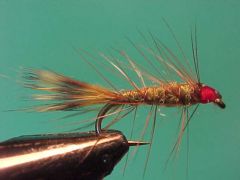
{{+1}}Yabby – Bill’s Eucumbene version{{-1}}
{{start}}
This little woolly bugger type fly was given to me by Jim Blyton. Jim fishes Lake Eucumbene a lot. As is so often the case the locals have developed flies that work for their fishery and this fly is one of those.{{end}}
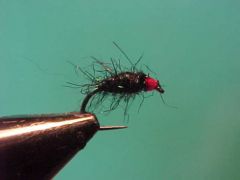
{{+1}}Snail – Jim’s Eucumbene version{{-1}}
{{start}}
Snails are a food source for trout throughout the year. Having said that they are often overlooked by fly fishers. In colours imitating the naturals in the area to be fished they can be slowly twitched along the bottom or the weed beds with great results. They are also a good ambush fly for trout foraging the margins.{{end}}
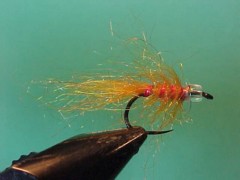
{{+1}}BMS 2{{-1}}
{{start}}
The BMS is a favourite fly at Lake Bullen Merri where it gets its name BM Special. Because of its history of success it is often regarded as a quintessential Rainbow trout fly by many Victorian fly fishers. This variant is tied with round tinsel which doubles up as a dubbing loop. In smaller sizes it has also proven itself as a great attractor fly for brown trout.{{end}}
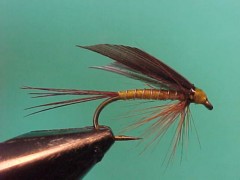
{{+1}}Greenwells glory (wet){{-1}}
{{start}}
This "must have" pattern was first tied by James Wright in 1854 for Cannon William Greenwell as a river wet fly. Over time it has been translated into a nymph and of course into a dry fly which is a must have fly when olives are around. The tie below is a modern version of the original wet.{{end}}
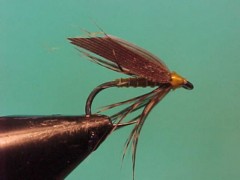
{{+1}}Grenwells glory – wee wet{{-1}}
{{start}}
Almost every English dry fly has a wee wet imitation. This is mine Greenwells Glory wee wet. Its a great little fly for across and down and works particularly well when fished along with a bead head spider.{{end}}
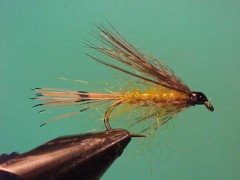
{{+1}}Bredbo variant MK2 – Chatto’s original{{-1}}
{{start}}
The MK2 is a great alternative middle dropper lock fly to my tie of a Dunkeld for those bright full sun days and also a very formidable wee wet for faster or discoloured rivers.{{end}}
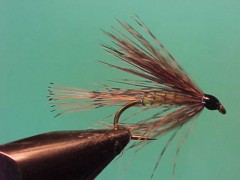
{{+1}}Bredbo variant MKI – Chatto’s original{{-1}}
{{start}}
The Bredbo fly is accredited as being the first Australian designed and made fly and whilst the originator is not known with certainty there is highly persuasive evidence that suggests that it was conceived around 1896 as a grass hopper imitation for targeting fish on the Bredbo river just outside of Cooma NSW. The evidence points to the fly being created by Mr C.R. Burnside and Dr A.J. Brady who along with Howard Joseland are amongst the pioneers of fly fishing for trout in New South Wales .{{end}}

{{+1}}Bredbo{{-1}}
{{start}}
o here you have a fly that fishes well as a formidable traditional river wet fly is now vying for a position as a very effective middle dropper for loch style fly fishing ... and its only a couple of hundred years old. One of my favourite flies in that situation is a Dunkeld and over the last two seasons I have found the Bredbo to be a very comfortable alternative particular in summer months when fish are turned onto the wing colour of the dominant local grass hopper the yellow winged hopper.{{end}}
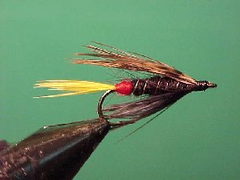
{{+1}}Connemara variant{{-1}}
{{start}}
It was the summer of 2000 that I first became involved on English style Loch Style fly fishing and slowly I accumulated an arsenal of techniques and flies. I really enjoy tying flies and so as I have seen various patterns I have tied them and tried them. Most have been discarded and just a few have won a place in my Loch Style fly box - this is one of them.{{end}}
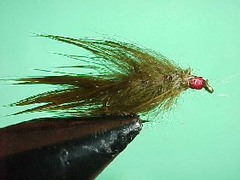
{{+1}}Fur fly{{-1}}
{{start}}
Conceptually these are a very simple fly but when tied with the right materials and in the right density they are a great all round fly. You can use them as a stream fly or for polaroiding or prospecting but in my opinion they are at their best when used as an attractor fly in a team of loch style flies. Choice of fur is important. If you can get died kangaroo that's OK but my preference is rabbit fur off a zonker strip.{{end}}













